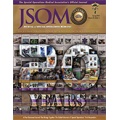Characterizing a System for Measuring Limb Tourniquet Pressures
20(1). 47 - 54 (Journal Article)
Background: Pressure is an important variable in emergency use limb tourniquet science. This study characterizes one system for measuring tourniquet-applied pressure. Methods: A neonatal blood pressure cuff bladder was inflated to target pressures over atmospheric. Unconstrained or constrained within 1-inch tubular polyester webbing, the neonatal cuff was placed in a 500mL Erlenmeyer flask. A 3-hole stopper provided connections to flask interior (chamber) and bladder pressure sensors and a 60mL syringe for altering chamber pressure: atmospheric to >1500mmHg absolute to atmospheric. Results: Within a finite range of chamber pressures, the neonatal cuffbased system accurately indicates applied pressure (minimum and maximum 95% confidence interval linear regression slopes of 0.9871 to 0.9953 and y-intercepts of -0.1144 to 2.157). The visually defined linear response ranges for bladder inflation pressures were as follows for unconstrained/ constrained: 100 to 400mmHg unconstrained/450mmHg constrained for 10mmHg, 150 unconstrained/100 constrained to 450mmHg for 12mmHg, 150 to 500mmHg for 15mmHg, 150 to 500mmHg unconstrained/550mmHg constrained for 18mmHg, 150 to 550mmHg for 21mmHg. Below the linear response range, the inflated bladder system indicated higher pressures than chamber pressures. Above the linear response range, the system indicated progressively lower pressures than chamber pressures. Conclusions: Within the linear response range, the bladder pressure accurately indicates surface-applied pressure.


 English
English 




